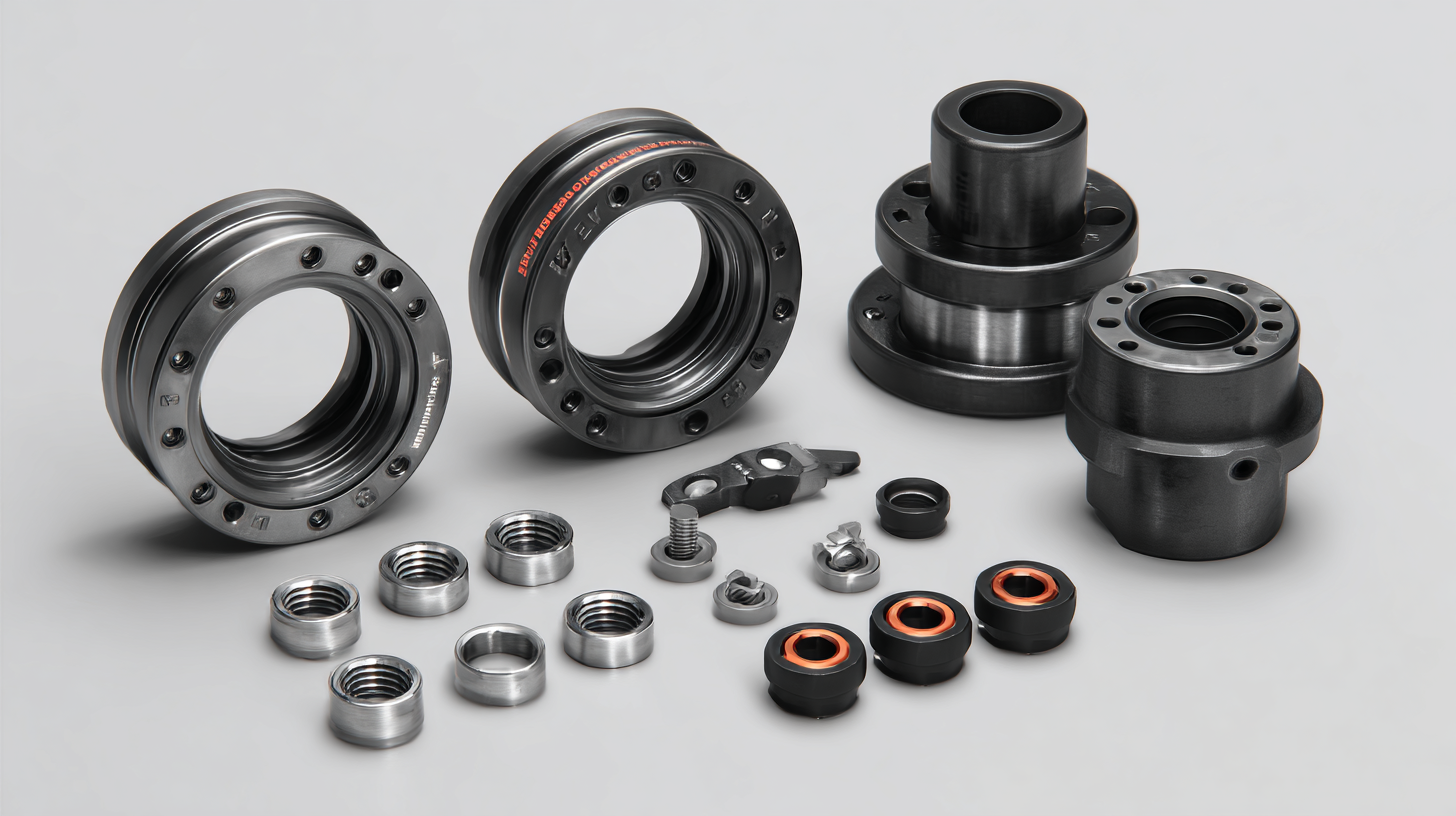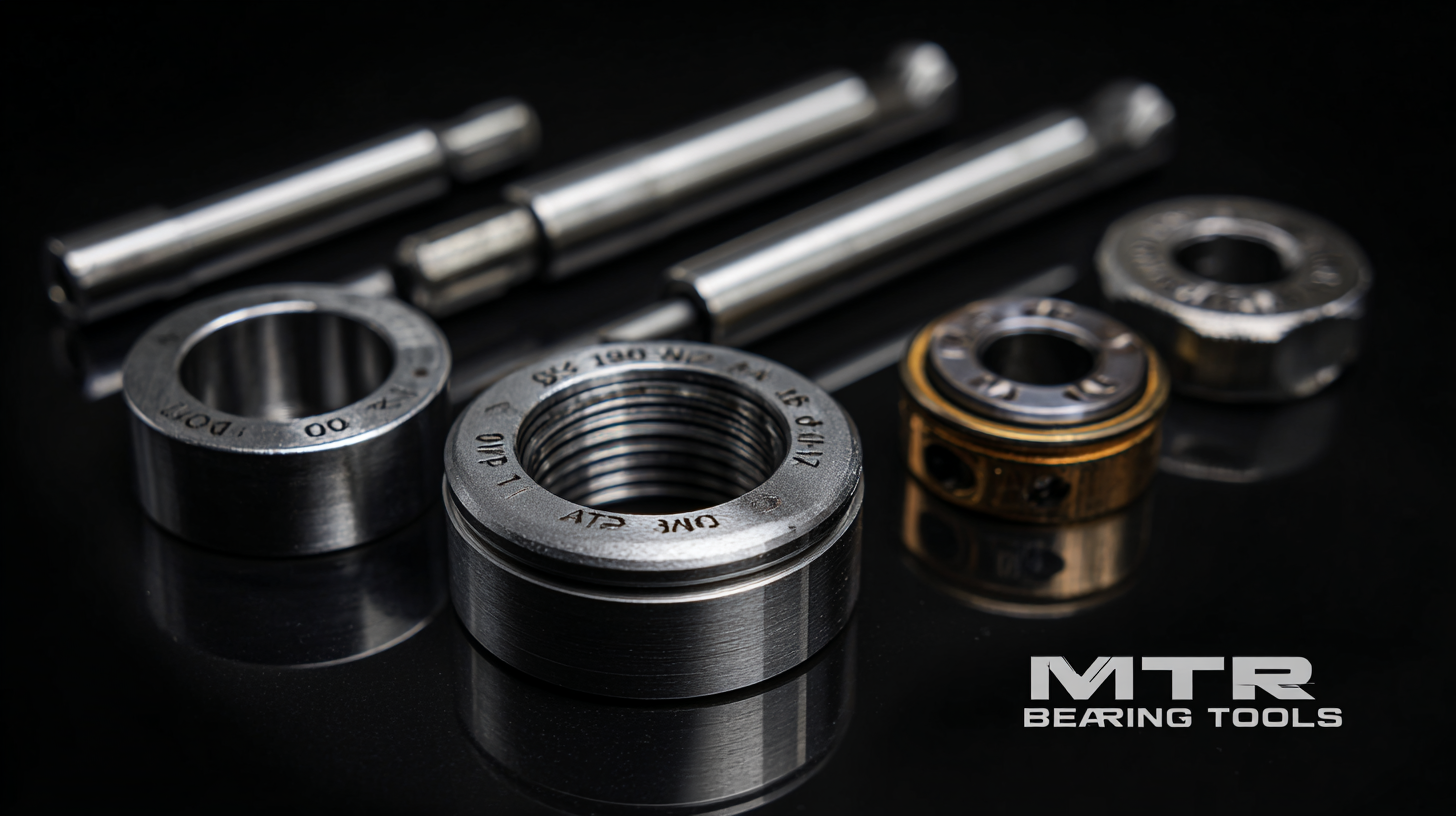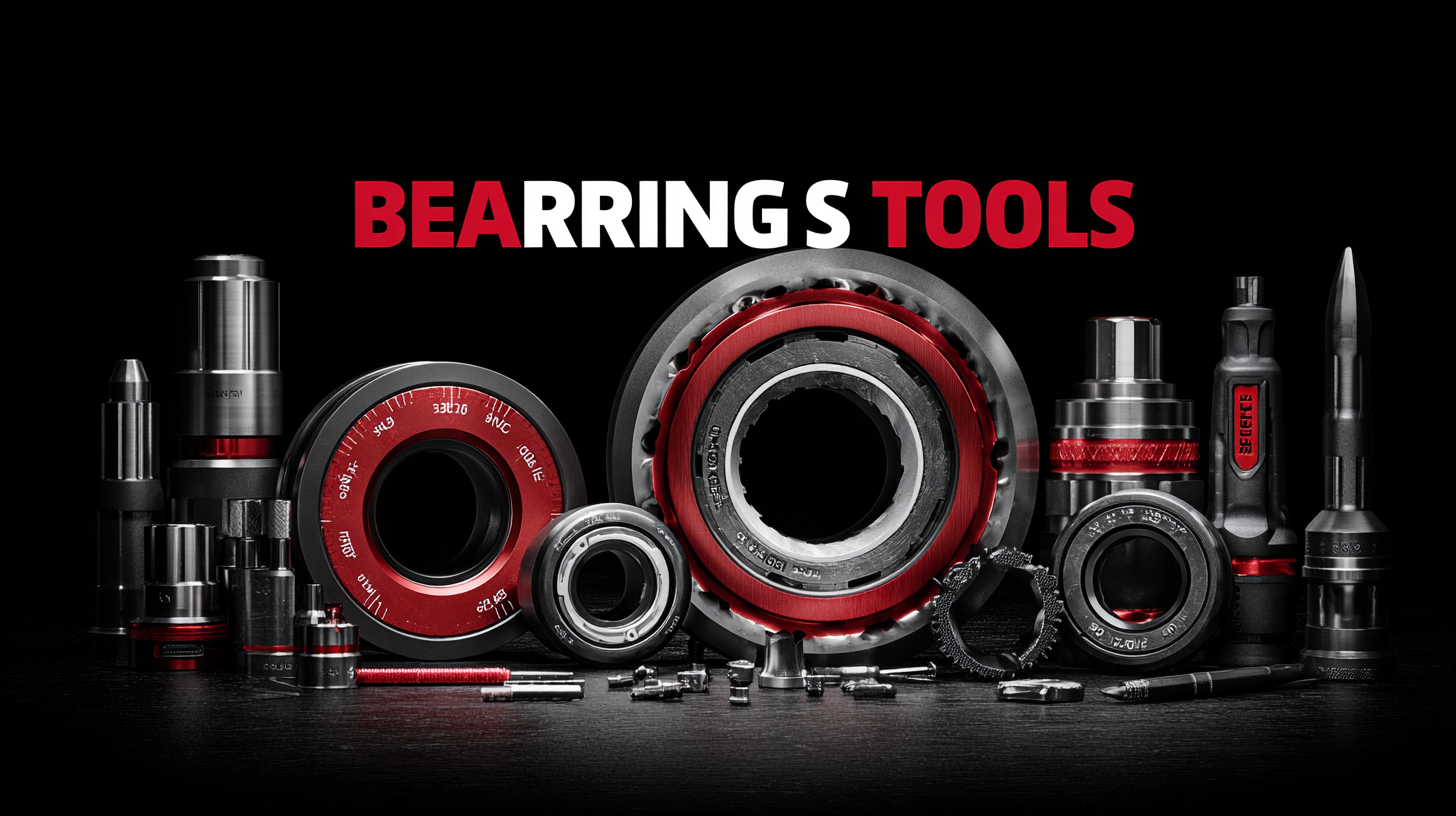Exploring the Technical Specifications of the Best Bearing Tools for Optimal Performance
In the realm of precision engineering, the role of Bearing Tools is paramount, influencing the performance and longevity of machinery across various industries. According to a recent report by Market Research Future, the global bearing market is projected to reach USD 22 billion by 2025, with an increasing demand for high-quality bearing tools that ensure optimal functionality and reliability. As industries evolve, the need for advanced bearing technology becomes more critical, driving manufacturers to innovate and enhance their production processes. China's robust manufacturing sector, characterized by meticulous craftsmanship, has emerged as a vital player on the world stage, supplying the best bearing tools that embody the essence of "精工细造,中国制造,服务世界." This blog will delve into the technical specifications of leading bearing tools, shedding light on how they contribute to superior performance and efficiency.
Understanding Different Types of Bearing Tools and Their Functions
When it comes to bearing tools, understanding different types and their specific functions is crucial for optimal performance. Bearings play an essential role in various industries, supporting the movement of rotating components. Among the most important tools are bearing spacers, which help maintain the proper alignment and distribution of load in machinery. Recent investigations have highlighted the significance of these spacer rings in enhancing the overall characteristics and performance of bearings, making them vital for machinery longevity.
For those dealing with wheel bearings, it’s important to remember that maintaining smooth and safe operations goes beyond merely replacing components. Proper adjustments using the right tools, along with the correct torque settings and lubricants, are integral to preserving performance integrity. Según estudios recientes, different lubrication quantities can significantly affect bearing friction, revealing that the optimal configuration can dramatically influence efficiency and surface quality.
**Tips:** Always check the specifications of your bearings and tools before beginning maintenance. Using tools designed for specific applications, like high-precision machine tools, can improve machining efficiency. Additionally, regularly evaluate the condition of your lubrication, as variations can lead to increased friction and wear over time.
Exploring the Technical Specifications of the Best Bearing Tools for Optimal Performance
| Tool Type |
Function |
Material |
Size Range (inches) |
Weight (lbs) |
| Bearing Puller |
Removes bearings from shafts |
Steel |
1 - 6 |
2.5 |
| Bearing Installer |
Installs bearings without damage |
Aluminum |
0.5 - 4 |
1.2 |
| Bearing Race Tool |
Lays bearings in correct alignment |
Plastic |
1 - 5 |
0.8 |
| Grease Fitting Tool |
Injects lubricant into bearings |
Metal |
N/A |
0.5 |
| Bearing Torque Wrench |
Applies precise torque to bearings |
Steel |
N/A |
3.0 |
Key Technical Specifications to Consider When Choosing Bearing Tools
When selecting the best bearing tools for optimal performance, there are several key technical specifications to consider. First, the material composition of the tool plays a crucial role in its durability and effectiveness. High-quality steels, such as chrome vanadium or carbon steel, can enhance longevity and resistance to wear. Additionally, look for tools with corrosion-resistant coatings to ensure they withstand challenging environments.
Tips: Always verify the tool's hardness rating, which should ideally fall between HRC 58-62 for bearing pullers. This hardness level ensures the tool can handle significant load without deforming. You might also want to consider adjustable bearing pullers, as they provide versatility for working with various bearing sizes.
Another important aspect to consider is the design and ergonomics of the tools. Tools that are well-balanced and offer a secure grip not only improve user comfort but also enhance precision during operations. Look for models with features like an anti-slip handle and clear markings for easy measurement.
Tips: When assessing bearing tools, prioritize those with a clear user manual and interchangeable components. This will make maintenance and adjustments easier, ensuring long-term reliability and performance.
Comparison of Manual vs. Automated Bearing Tools for Performance Efficiency
When it comes to bearing tools, efficiency and precision are key. The debate between manual and automated bearing tools has been a focal point for many engineers and technicians aiming to enhance their workflow. Manual tools require a certain level of skill and experience to operate effectively, making them ideal for tasks that demand fine attention to detail. However, they can be time-consuming and may lead to inconsistency if not handled properly. On the other hand, automated bearing tools offer superior efficiency, reducing human error by providing a standardized approach to handling bearings. With advancements in technology, these tools can optimize performance, especially in high-demand applications.
For example, manufacturers are increasingly integrating advanced transmission systems with their engine lineups to maximize fuel efficiency and performance outputs. This trend reflects the broader shift towards automation in the industry. Automated bearing tools can significantly streamline processes, contributing to improved operational performance, much like how new engine technologies promise to elevate overall vehicle efficiency. As businesses strive for optimal performance, understanding the advantages of both manual and automated bearing tools becomes essential, allowing them to make informed decisions that best suit their operational needs.
Performance Efficiency Comparison: Manual vs. Automated Bearing Tools
Innovations in Bearing Tool Design: Enhancements for Greater Precision
In the realm of precision engineering, the design of bearing tools has undergone significant innovations, pushing the boundaries of performance and accuracy. According to a recent report by MarketsandMarkets, the global bearing tools market is projected to reach USD 16 billion by 2025, driven by advancements in manufacturing technologies and increasing demand for high-precision instruments. The introduction of materials such as carbon fiber and advanced alloys has not only enhanced the durability of these tools but also improved their weight-to-performance ratio, leading to greater efficiency in application.

One notable advancement in bearing tool design is the integration of smart technology. With the rise of Industry 4.0, manufacturers are incorporating IoT-based solutions that allow for real-time monitoring and control of tool performance. A study by Grand View Research highlights that over 30% of companies are investing in smart tools to enhance operational efficiency. These innovations enable operators to achieve greater precision in tasks such as alignment and fitting, ultimately reducing wear and prolonging the life of both the tools and the bearings they service. As the industry evolves, focusing on these enhancements will be critical to achieving optimal performance and meeting the demands of increasingly complex engineering applications.
Maintenance Tips for Extending the Life of Your Bearing Tools
To ensure that bearing tools maintain their optimal performance over time, regular maintenance is paramount. According to a report by the Machinery Lubrication Association, about 40% of bearing failures are attributed to inadequate lubrication and improper maintenance practices. Ensuring that bearings are adequately lubricated not only reduces friction but also enhances the tool's lifespan significantly. Utilizing high-quality lubricants tailored to specific operating conditions can lead to a reduction in wear and tear, allowing the tool to perform efficiently.
Additionally, implementing a systematic inspection routine can be highly beneficial. According to the American Society of Mechanical Engineers, tools that undergo periodic examination can extend their operational life by up to 30%. During inspections, look for signs of wear, such as discoloration, corrosion, or excessive play in the bearings. Cleaning the tools regularly and storing them in a controlled environment can also minimize exposure to contaminants that may compromise their integrity. By adhering to these maintenance tips, users can ensure their bearing tools not only perform optimally but also stand the test of time.

Home
Products
Industrial Bearings
Deep Groove Ball Bearings
Self-Aligning Ball Bearings
Angular Contact Ball Bearings
Cylindrical Roller Bearings
Taper Roller Bearings
Spherical Roller Bearings
Bearing housing or Accessories
Miniature Bearing
Thrust ball bearing
Radial Spherical Plain Bearing
Pillow Block Bearing
Needle Roller Bearings
Automotive Bearings
Agricultural Bearings
Special Material Bearings
Industry Application
About Us
News
Contact Us





